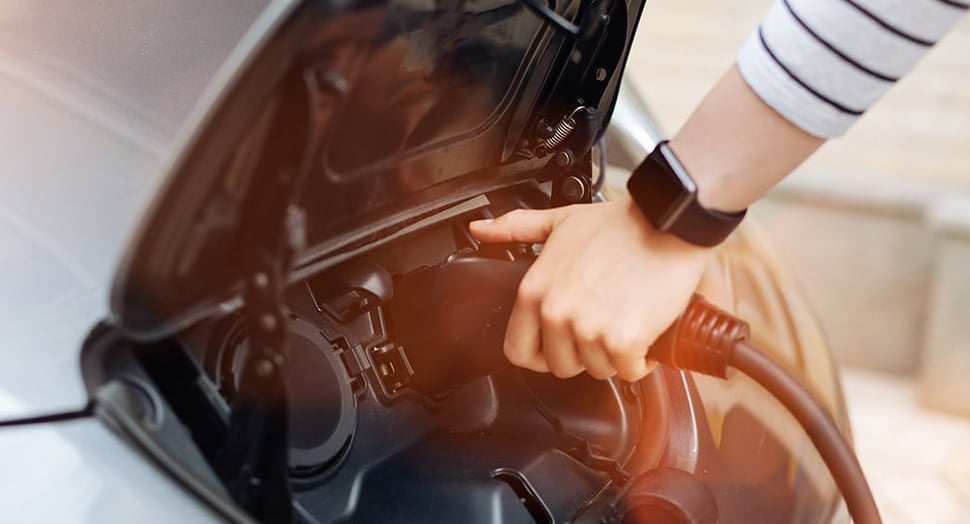 The Nissan Leaf has some of the most advanced charging capabilities in the EV industry today. As the owner of a Leaf, you’ll be able to charge in public, at home or while you’re on the road.
The Nissan Leaf has some of the most advanced charging capabilities in the EV industry today. As the owner of a Leaf, you’ll be able to charge in public, at home or while you’re on the road.
Before we get into the different methods of charging, here’s some basic information about the different types of chargers that are commonly used to power up a Leaf:
- Level 1: Requires a 120 V outlet and provides 4.5 miles of range per hour.
- Level 2: Requires a 240 V outlet and provides 12 miles of range per hour.
- Level 3 (DC Fast Charging): Requires a 240 V outlet, converts AC to DC within the unit and provides 40 miles of range in 10 minutes.
It’s important to mention that charging times and ranges will vary depending on the model you’re driving and the environmental conditions of the charging station. For example, EVs with bigger batteries take longer to charge. Also, some public charging stations are slower than others, due to the source they’re receiving power from.
When your Leaf’s battery is low, these will be your options for charging:
Charging in public
There are over 30,000 public charging stations in the U.S. where you can plug in your Leaf. These stations mostly consist of Level 2 chargers, but many have DC fast charging capabilities as well.
The cost of charging in public will depend on your specific EV and the state that you’re driving in, since electricity prices vary throughout the country. For example, the price of a full charge in Hawaii is $9.71, while in Washington it’s only $3.02.
In comparison to gas, the price for EV charging is not that expensive. The cost for every hour of charging usually falls between $0.39 and $0.79. Also, there are many stations, mostly in commercial areas, that allow you to charge for free!
Charging at home
Powering up your Leaf in the comfort of your own home is definitely the most convenient option. As long as you have the proper outlet and a dedicated circuit, you can install Level 1 or Level 2 charging stations in your home.
When you purchase a Leaf, it’ll come with a Level 1 charger for you to use. Keep in mind, these are the cheapest chargers available; they plug into standard household outlets and they provide the slowest results. If you want to be able to charge faster, consider buying a Level 2 charging station separately.
In order to set up a Level 2 charging station, you’ll need to hire a professional installation service. Trying to install the station on your own can lead to serious injuries and damaged property. You might accidentally electrocute yourself or start a fire in the process. Rather than trying to save money, invest in your own safety by turning to an EV-licensed electrician. They will check the electrical wiring in your house, build in a new circuit breaker if necessary, install the station and teach you how to use it safely.
Charging on-the-go
The Level 1 charger that comes with your Leaf can be plugged into any standard outlet, so you’ll be able to charge anywhere that has electricity. Just make sure nothing else is plugged into that outlet before using it. EV chargers require one dedicated circuit to ensure the safest and most efficient charge possible.
You can also purchase portable charging stations for your Leaf, so you can charge even when you’re not near an outlet. If you’re driving down a remote highway and are in need of a quick charge, you can pull over, grab your portable charging unit and cord out of the trunk, plug the Leaf in and start filling up the battery right on the side of the road.
Charging with solar power
What if you could charge your Leaf at home without seeing an increase in your electrical bill? With the help of modern domestic solar panels, you can.
Now, many EV drivers and homes won’t be compatible with this type of charging. After all, solar panels are expensive, as well as difficult to install and maintain. Weather is another big factor to consider here. If you live somewhere with little sunlight, you’ll find little use for solar panels.
But, for homes that are compatible, using solar energy is an awesome way to power up your Leaf. Once the panels are paid for and installed, you won’t have to spend any more money to charge your Leaf from home. According to EnergySage, the average person who buys solar panels for their home breaks even on their investment in seven and a half years.
Interested in learning more about Leaf charging stations? Connect with us at Webasto today!

